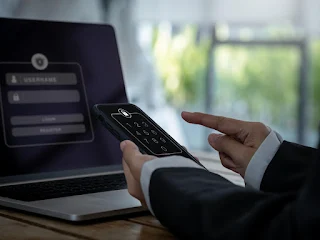Introduction
MFA enhances the protection of accounts and applications by requiring at least two identity verifications, which could be categories of knowledge, possession, inherence, or location. The importance of the MFA technique stands amplified because threat actors continue to escalate their attacks to breach individual logins and gain personal versus institutional access to users. This guide delves deeper on what MFA is and how important it is in defending your online presence.
What is MFA?
Multi-Factor Authentication (MFA) is a method of verifying your identity using more than just a password. It typically involves two or more steps:
- Something you know (like a password)
- Something you have (like a phone or security token)
- Something you are (like a fingerprint)
By requiring multiple forms of verification, MFA adds an extra shield against unauthorized access.
Types of MFA
There are different types of MFA methods you can use to protect your accounts:
- SMS or Email Authentication: Easy to set up but less secure.
- App-Based Authentication: More secure options like Google Authenticator or Authy generate time-based codes.
- Hardware Tokens: Devices like YubiKey provide the highest level of protection.
- Biometrics: Using your fingerprint or face scan for quick and secure logins.
Why You Need MFA
With cyberattacks on the rise, MFA is one of the simplest ways to protect your accounts. Even if someone gets your password, they would still need the second step to break in. According to security experts, MFA can block up to 99% of automated attacks. It’s a must-have for personal and business accounts alike.
How to Set Up MFA
Setting up MFA is easier than you might think. Here’s how you can enable it on some common platforms:
- Google: Go to your account settings, click on “Security,” and enable 2-Step Verification.
- Facebook: Head to “Settings & Privacy,” then select “Security” and set up 2FA.
- Microsoft: Under your account, click on “Security settings” and choose “Two-step verification.”
MFA Best Practices
To get the most out of MFA, follow these quick tips:
- Choose app-based authentication: It’s much more secure than SMS.
- Set up backup methods: Have alternative verification methods ready, like backup codes.
- Review your settings regularly: Make sure MFA is enabled on all sensitive accounts.
Conclusion
In today’s fast-paced digital space, protecting your accounts requires more than just a password. MFA is a simple yet powerful tool that adds an additional barrier between your data and cybercriminals. Take the time to enable it now, and you’ll have peace of mind knowing your accounts are much safer.
Call to Action
Looking for more robust protection? SafeAeon offers MFA-as-a-Service, helping businesses implement strong, easy-to-use multi-factor authentication solutions. Contact us today to learn more!

No comments:
Post a Comment